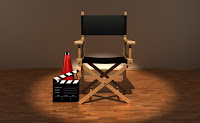match on action - A match on action, a technique used in film editing, is a cut that connects two different views of the same action at the same moment in the movement. By carefully matching the movement across the two shots, filmmakers make it seem that the motion continues uninterrupted.
shot/reverse shot - Shot reverse shot is a film technique where one character is shown looking at another character (often off-screen), and then the other character is shown looking back at the first character. Since the characters are shown facing in opposite directions, the viewer assumes that they are looking at each other.
180-degree rule - The 180° rule is a basic guideline in film making that states that two characters (or other elements) in the same scene should always have the same left/right relationship to each other. If the camera passes over the imaginary axis connecting the two subjects, it is called crossing the line.
